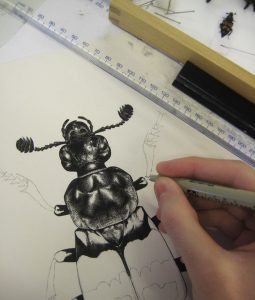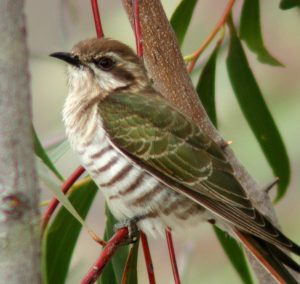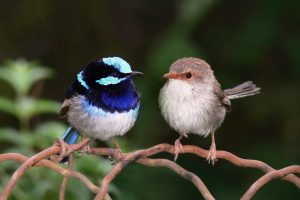The fascinating natural history of Nicrophorus beetles means that they have become a model study species in evolutionary ecology. The lifecycle of these beetles centres on the dead body of a small vertebrate, like a mouse or bird. Having located a carcass, they strip it of fur or feathers and roll the flesh into a ball, which they bury in a shallow grave. They then smear the flesh with antimicrobials. The female lays her eggs in the soil near the carcass, the larvae hatch and crawl to a crater nibbled into the meat by their parents beforehand. There, they solicit food (predigested carrion, probably) which the parents transfer from their mouthparts. The parents remain in attendance at the carcass, partly to defend it and the offspring from any infanticidal intruders, and partly to continue to nourish the offspring. The male leaves sooner than the female, who stays until the larvae have completed this phase of their development, around 7 days after hatching. The parents fly off in search of new breeding opportunities, while their larvae disperse into the soil from what remains of the carcass to pupate and, eventually, eclose as adults.
Cuckoos are remarkable for their habit of laying their eggs in the nests of other species, so that the cuckoo chicks are then raised by foreign parents. Cuckoos are often called ‘brood parasites’ because in this way they parasitise parental care provided by other species, and so avoid the considerable effort associated with raising offspring themselves. Just as with any other sort of parasitism, hosts defend themselves against exploitation by cuckoos by: mobbing adult cuckoos who come near the nest, rejecting odd eggs and rejecting foreign chicks. This sets in motion a coevolutionary arms race between cuckoos and their hosts, in which better host defences select for counter-adaptations in cuckoos, to overcome them (Kilner & Langmore 2011).
About 1% of all birds are brood parasites, and it has evolved at least 7 different times within the birds as a whole. Brood parasitism is also known in other animals, such as insects and fish (Kilner and Langmore 2011).
Most of our work on brood parasites has focused on the Horsfield’s bronze-cuckoo Chalcites basalis, through a longstanding collaboration with Naomi Langmore at the Australian National University. This Australian species targets many different host species, but specialises on parasitising fairy-wrens (Malurids).
We have found that this cuckoo is sequentially monogamous (Langmore et al 2007), with males holding territories that encompass 10-20 host territories. Females stay faithful to one male and then lay their clutch of roughly 8 eggs, with one egg per nest every other day among each of these hosts, before leaving and being replaced by another female.
The female lays a ‘one size fits all’ egg – which approximately mimics the majority of its many hosts, so enabling the cuckoo egg to survive, unrejected in the host nest (Feeney et al 2014).
After hatching, the cuckoo chick kills host chicks by evicting them from the nest. It then flexibly adjusts its begging call to tune into the particular existing communication system in that host for soliciting food from parents – making a long rasping begging call, characteristic of young thornbills, when soliciting food from thornbill parents but a purer sounding note, which resembles the calls of superb fairy-wrens when raised in a fairy-wren nest (Langmore et al 2008). How they achieve this, having first killed all the host young and thus removed any templates for learning, is still a mystery.
At 40% of nests, hosts defend themselves against parasitism by rejecting the cuckoo chick. The female simply stops feeding it and starts building a new nest and the cuckoo starves to death (Langmore et al 2003). Female fairy-wrens recognise a cuckoo chick because it is alone in the nest (usually they raise 3 or 4 chicks in a brood0, and they are more likely to reject cuckoos that make a wrong-sounding begging call (Langmore et al 2003). They get better at spotting a cuckoo chick in their nest as they gain experience in raising their own offspring (Langmore et al 2009).
Publications
Feeney W. E. et al 2014 ‘Jack-of-all-trades’ egg mimicry in the brood parasitic Horsfield’s bronze-cuckoo? Behav Ecol 25: 1365-1373
Kilner, R. M. and Langmore, N. E. 2011 Cuckoos versus hosts in insects and birds: adaptations, counter-adaptations and outcomes. Biological Reviews 86:836-852
Langmore, N. E. et al 2003 Escalation of a co-evolutionary arms race through host rejection of brood parasitic young. Nature 422:157-160
Langmore, N. E. et al 2007 The spatial organisation and mating system of Horsfield’s bronze-cuckoos Chalcites basalis Anim Behav 74:403-412
Langmore, N. E. et al 2008 Socially acquired host-specific mimicry and the evolution of host races in the Horsfield’s Bronze-Cuckoo Evolution 62:1689-1699
Langmore, N. E. et al 2009 Flexible cuckoo chick rejection rules in the superb fairy-wren Behav Ecol 20:978-984
We have worked on Hihi (or stitchbirds), a songbird endemic to New Zealand, by collaborating with John Ewen at the Institute of Zoology in London. You can find out more about these wonderful birds on this website (www.hihiconservation.com).
Our work on cuckoos led us to experiment with a cuckoo host in Australia, the superb-fairy wren.
These birds have an interesting social life in their own right, even before becoming exploited by cuckoos. Generations of research by Australian evolutionary ecologists has found that they are facultative cooperative breeders. In plain English, this means that sometimes a pair of birds will raise offspring together, but more commonly the pair will be assisted by helpers at the nest. Helpers are always adult males in this species, and often sons from previous breeding attempts (daughters disperse away to a territory far from their relatives).
Although pairs can be assisted by as many as 5 helpers when feeding offspring, strangely the chicks themselves seem to gain no benefit from all this extra provisioning and fledge the nest weighing no more than when raised by a pair.
We solved this puzzle by looking at the fairy-wren’s eggs (Russell et al 2007, 2008). When breeding females are assisted by lots of helpers, they systematically undernourish their eggs, so that they are less rich in fat, protein and carbohydrate and yield smaller chicks at hatching. After hatching, the helpers compensate for this under-investment with their extra provisioning at the nest so that by the time they fledge, the chicks have caught up in mass.
By skimping on egg investment, females are able to put more resources into survival and live longer as a result. So the extra resources provided by helpers are effectively taken by breeding females to promote their own fitness, which explains why we see no benefit of helpers for chicks.
Publications
Russell A. F. et al 2007 Reduced egg investment can conceal helper effects in cooperatively breeding birds. Science 317:941-944
Russell, A. F. et al 2008 Maternal investment tactics in superb fairy-wrens. Proc R Soc B 275:29-36
Bird eggs vary considerably among species in the colour of their shells and the patterns that adorn them. They may be white or chocolate brown, glossy turquoise or brick red, violet or emerald green. They may be immaculate or covered in scrawls, speckles and blotches. The extent of variation is remarkable, but it is spread unevenly across bird taxa (Kilner 2006).
Our research has investigated the diverse factors that account for variation in bird egg colouring (Langmore et al 2005, Langmore et al 2009, Stoddard et al 2011) and patterning (Stoddard et al 2012, Stoddard et al 2014).
We have also investigated how nourishment of the egg affects the phenotype of the hatchling (Russell et al 2007).
And our experiments even suggest that mothers communicate with their developing offspring within the egg, by depositing hormones and other cues within (during oogeneis) that indicate the quality of the nutritional environment after hatching (Hinde et al 2009). Offspring adjust their begging behaviour according, becoming more demanding when there is the prospect of greater rewards (Hinde et al 2010). When this system of pre-natal communication is disrupted experimentally, offspring grow more poorly as a result (Hinde et al 2010).
Publications
Hinde, C. A. et al 2009 Prenatal environmental effects match offspring begging to parental provisioning. Proc R Soc B 276:2787-2794
Hinde, C. A. et al 2010 Parent-offspring conflict and coadaptation. Science 327:1373-1376
Kilner, R. M. 2006 The evolution of egg colour and patterning in birds. Biol Rev 81:383-406
Langmore, N. E. et al 2009 Are dark cuckoo eggs cryptic in host nests? Anim Behav 78:461-468
Stoddard, M. C. et al 2011 Imperfectly camouflaged avian eggs: artefact or adaptation? Avian Biology Research 4:196-213
Stoddard, M. C. et al 2012 Egg speckling patterns do not advertise offspring quality or influence male provisioning. PLoS ONE 7:e40211




